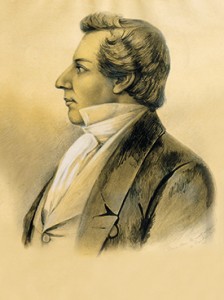The “Vision of Gabriel,” (aka Hazon Gabriel) a newly discovered Hebrew text written in ink on stone out of the antiquities market, made a big splash in the media over the last few weeks, and received some amount of coverage in the bloggernacle as well. Paleojudaica has been keeping track of all the coverage. First discussed in 2007 among a small group of scholars, the text has recently hit the media in a big way. The announcement of this text seems to have caught many off-guard, so I have been waiting to see what kind of analysis could be given after the initial dust had cleared. The first translation was published in Cathedra in Hebrew, and created some small buzz among people who really care. An English translation has been posted by Israel Knohl.
The increased attention this text received began with a full-length article in the May Journal of Religion by Israel Knohl, whose scholarly work has aimed to show from the DSS and Talmud that a view of a suffering Messiah pre-existed Christianity. In his article, he deploys the text as further evidence of his larger argument. While I know of no one who would be opposed to Knohl’s thesis, I also know no one that is convinced by the evidence he has offered (but then again, I don’t know that many people). Knohl’s work is going to be received skeptically, as it should be. In his treatment of the work, he basically just does free association with the names he reads and asserts all kinds of bizzare claims like that Joseph in the ancient romance novel Joseph and Aseneth is a Messiah-figure. (Is it too obvious that I am not a fan?)
So what does this text say? The text is certainly apocalyptic in tone, predicting God’s intervention on earth in “three days” (ln. 19), in
which he will shake heavens and earth (ln. 25). (There is good reason to believe that this is working out of an interpretive tradition of Hosea 6:1-3, and perhaps 1st c. Christians thought of Jesus in these terms as well.) Otherwise, it is relatively incoherent due to severe lacunae. The money line was first suggested by Knohl in his JOR article, in his reconstruction of line 80-81 in the text to read “By three days, live, I Gabriel, command you, Prince of the princes.” The hype around this suggests that this proves that the notion of a suffering messiah who would die and rise in three days was not unique to Christianity, but was a common notion in ancient Judaism.
Knohl’s translation of this passage differs from the original scholarly translation and reconstruction into Hebrew. There are, however, several problems with it. First, the key word “live,” is reconstructed from only a single letter, which is “doubtful” even according to Knohl. Second, he assumes that this refers to a resurrection experience. Third, he assumes that “Prince of Princes” refers to a mortal Messiah, rather that one of the many angels in the text, such as Michael. In numerous eschatological texts, Michael or an angel are the agents for God’s eschatological intervention.
There have been some reasons to be skeptical about the authenticity of this find. First, it is unprovenanced, meaning that it comes from the antquities market, meaning it was stolen from a cite somplace or faked. Second, the “ink-on-stone” is previously unheard of and is impossible to date scientifically. Many have warned readers to approach a new text type with extreme skepticism. The dating of the text to the first century BCE appears to be on the basis of paleography, including the similarity of the writing to the Dead Sea Scrolls. Despite these limitations, there are some serious scholars backing it up. As the text receives more professional scrutiny, we will surely get more opinions on this.
The current status of the relevance of this text is that 1) if the text is authentic and accurately dated to the 1st c. BCE and 2) if Knohl’s reconstruction of the text is correct and 3) if Knohl’s interpretation of the text is correct, then we have some interesting data, but not a whole lot. Does it, as some articles have suggested, “cast doubt on the death and resurrectino of Jesus”? Uh, no. Does it cause us to reimagine the relationship between Judaism and Christianity? Perhaps, but I would say only at a lay level. The defense of the uniqueness of Christianity has been seriously questioned since the turn of the 19th century by the Myth and Ritual school, and has continued up to the present day. It is pretty much taken for granted that the earliest strands of “Christianity” were essentially indistinguishable from “common Judaism”, and the blurred relationship between them continues for many centuries. My initial take is that there is nothing to see here folks; move along.











